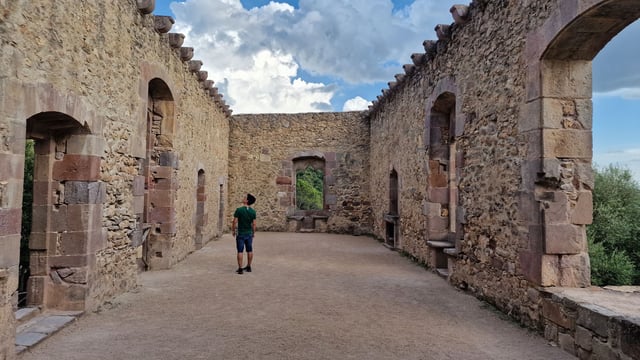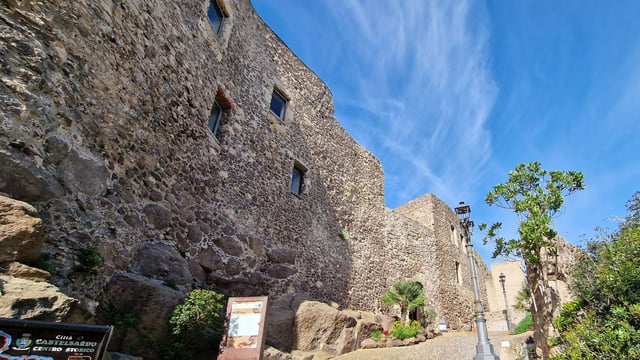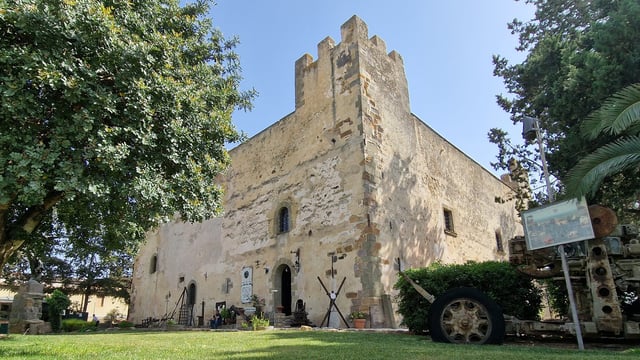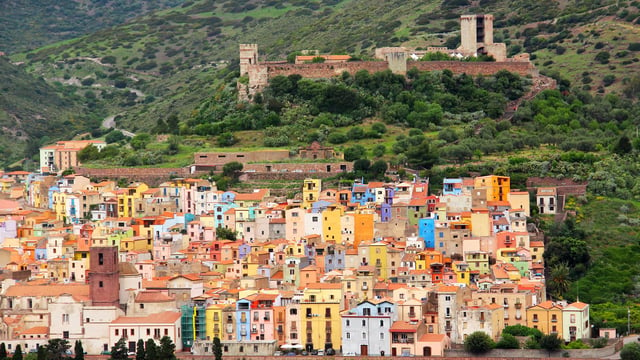Fortresses, Castles & Palaces in Sardinia
An island with a complex but fascinating past, Sardinia is home to an array of defensive structures and regal residences that chronicle this history. Some are now ruined – hinting at stories of the past, while others stand robust, preserving the glory of bygone eras. From strategically placed medieval castles to the opulent Palazzo Regio in Cagliari, these edifices are a testament to the island’s rich and historically diverse cultural heritage. A visit to these locations offers a way of understanding changing times during the Middle Ages through periods of dominion and resistance.
This page about the fortresses and castles of Sardinia is part of our Sardinia Travel Guide – a section of our Italy Travel Guide. It is produced by Gianluca Pitzeri, a Sardinian archaeologist, and Thomas Dowson, the founder of Archaeology Travel. Read more about this website, our values and mission, and how we produce these guides.
Create Your Sardinia Itinerary & Travel Lists
If you are planning a trip to Sardinia you can use our itinerary builder with the list of sites and museums below to create your own travel lists (such as places you have been to, places you would like to visit) and itineraries. These can also be shared with your friends, privately and on social media. To make use of this feature, however, you will need to login or register as a new user. Registering to use our itinerary builder is free of charge. The list below only includes prehistoric sites and museums with prehistoric collections; for your convenience we have also produced an A – Z list of Art, Archaeology & History Sites & Museums in Sardinia, Italy.
Fortresses, Castles & Palaces in Sardinia
Alghero Medieval Walls
One of the most striking and picturesque features in Alghero are the medieval walls surrounding the town’s historical centre. Canon and catapults, towers and forts along the way are a fascinating reminder of Alghero’s rich history. Like many places, these walls were built and then repaired and developed over the centuries. Alghero was a fortified Genoese port town as early as the 11th century. In the mid 1300s the Catalans repaired the walls, but much of what we see today was built in the 16th century by the Aragonese.


Aymerich Castle, Laconi
Set in a public park created in 1830 are the ruins of the medieval Aymerich Castle. Although much of what we see today dates to at least the 13th century, it is thought that there was an earlier settlement probably dating back to the 12th or even the 11th century. The castle was built to defend the borders of the Judicate of Arborea from the Cagliari Judicate. In the 19th century, when the ruling family of the fief of Laconi were living here, the castle was destroyed by fire. Visitors are free to walk among the ruins and see the vaulted arch entrance that is flanked by a rectangular tower, and the remains of the palace, with its Catalan-Gothic windows.

Doria Castle
The construction of the castle dates back to the second half of the 13th century by the Genovese Doria family. Given its position, it was a highly coveted fortress over the centuries, as it allowed the control of the maritime routes passing through Sardinia. It passed through many hands. From the Doria family and the Judges of Arborea, the 15th century and the Aragonese, and in the 18th century to the Savoy dynasty. From its bastion, the castle offers visitors breath-taking views of the town and the striking coastline. The castle has been renovated and now houses the Museum of Mediterranean Interweaving.

Eleonora d'Arborea Castle
The castle is the only one still habitable on the island, and is preserved in perfect condition. It was built between 1188 and 1195 at the behest of Pietro I Judge of Arborea, to defend the borders of his Judicate from the Judicate of Cagliari. It witnessed events that marked the history of medieval Sardinia, such as the Battle of Sanluri, which decreed the end of the Judicate of Arborea. Over time, it lost its defensive functions, eventually becoming the seat of the Risorgimental Museum Duke of Aosta, which contains various historical relics of the Risorgimento and the First World War. The rooms of the castle still house their original furniture, with pieces ranging from the 17th to the 20th century.

Malaspina Castle
The chronology of its construction is uncertain, with historical records suggesting a date of 1112, while archaeological data point to the 13th century. It was built as a lookout point, specifically to control Temo River, an important access route to the hinterland. It is still possible to walk the castle’s ramparts, admiring in all its beauty the picturesque landscape of Bosa, in which the colours of the houses in the old town are enhanced by the river flowing through it. Inside is the Palatine Chapel of ‘Nostra Signora di Sos Regnos Altos’, which houses a cycle of frescoes unique to Sardinia, dating back to the 14th century.

Palazzo Regio
Located in the historic Castello quarter of Cagliari, the Royal palace, also known as the Viceregio (or Viceroyal palace), was built in the 14th century as a residence for the king’s representatives in Sardinia. It was used as such by the Aragonese, the Spanish and the Savoyards, each of which left their own mark in their adaptations. Today it serves as the administrative seat of the Metropolitan City of Cagliari. After climbing the grand 18th century staircase entry is only €3, for which you can see the ornate Council Chamber and various private and state reception rooms.

Torre di Longonsardo
Longonsardo Tower is at the northern end of the seaside resort of Santa Teresa Gallura, hence it is also known as Santa Teresa Tower. Set upon the rocks, it overlooks Sardinia’s northern coastline towards Corsica. The tower was part of a defensive system built in the 16th century for King Phillip II of Spain to protect Sardinia from looters. An impressive circular turret tower built using granite and with a height of 11 m, it is the largest defensive structure to be built by the Spanish in Sardinia. It has recently been repaired and refurbished, and is open to the public.










